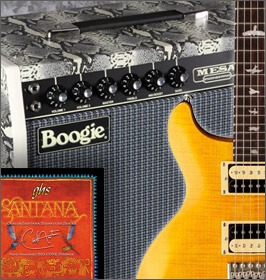The first Santana album (often called Santana by Santana) was not the result of late-night, coffee-fueled songwriting sessions. Rather, it was forged by a group of skilled musicians, creating on the fly. Their improvised, blues-inspired “jams” grew throughout several months of rehearsals and gigs during the late ’60s.
When the band finally went into the studio in early 1969, their skill as musicians — and chemistry as a band — turned what could have been a series of half-baked ideas into a memorable record. Two of the key ingredients of that musical stew were the keyboard playing and vocals served up by founding member Gregg Rolie.
The Rolie factor
Vocally, Gregg contributed a rich, throaty sound that belied his youth. (Most of the band members were 21 years old when the album was recorded; drumming phenom Michael Shrieve was 19.) Rolie’s whiskey-soaked tone was immortalized on “Shades of Time,” “Jingo,” “Evil Ways,” and other cuts from the first record. The release of Abraxas cemented his place in rock history with his vocal performances on “Black Magic Woman,” “Oye Como Va,” “Hope You’re Feeling Better,” et al.But it was his riffs on the Hammond B3 organ that were the true unsung heroes of that period. Instrumental pieces like “Waiting” and “Savor” are basically organ solos; it is Rolie’s innate gift for melody that makes them memorable songs.
As an arranger, Gregg is the consummate team player — instinctively knowing what to do to make each song sound better. His chord inversions that open “Oye Como Va” alone are enough to bring a crowd to their feet, even today. In the intro to the verses on “Jingo,” he uses a simple pattern based on a Bm7 chord to build an amazing amount of excitement.
And “Black Magic Woman” wouldn’t have been the hit it was without Rolie’s iconic two-part organ intro, bluesy electric piano solo, and tasteful comping on both instruments throughout the entire song.
Journey into the future
Carlos Santana wasn’t the only legendary guitar player to recognize — and benefit from — Gregg Rolie’s deceptively simple keyboard playing and singing. When Santana changed gears in 1973, a young Neal Schon (who had been in the band for a couple of years at the end) contacted Rolie and asked him to join a new group.
The concept for the band, originally titled the Golden Gate Rhythm Section, was a unit that would back up artists in the studios around the San Francisco bay area. Also in the lineup were bassist Ross Vallory, rhythm guitarist George Tickner, and drummer Prairie Prince (later replaced by Ansley Dunbar, when Prince re-joined his original band, The Tubes).



